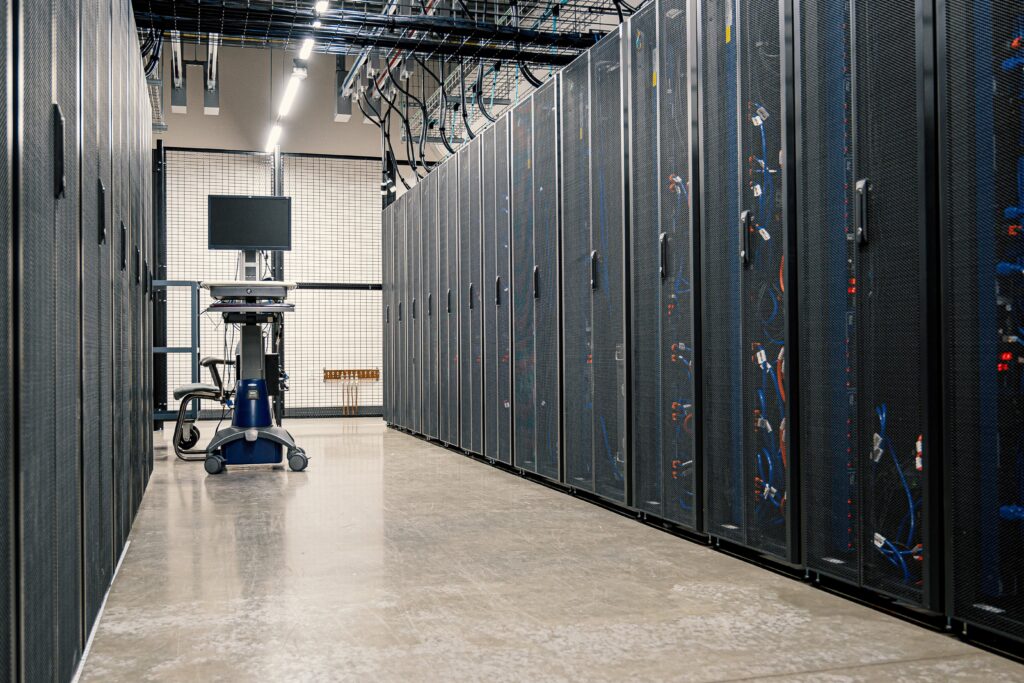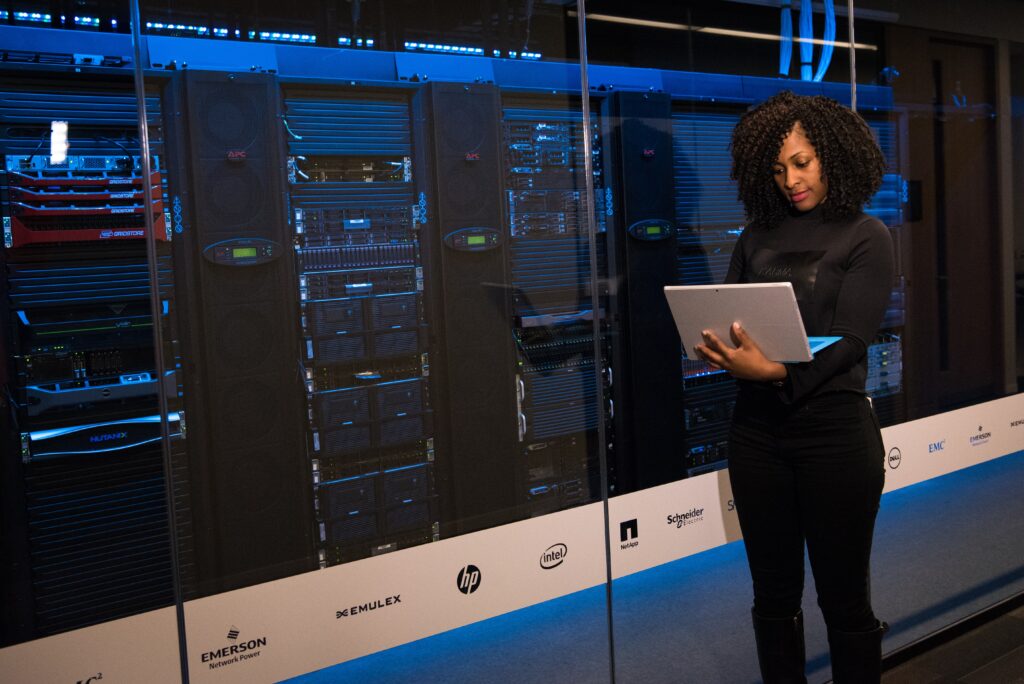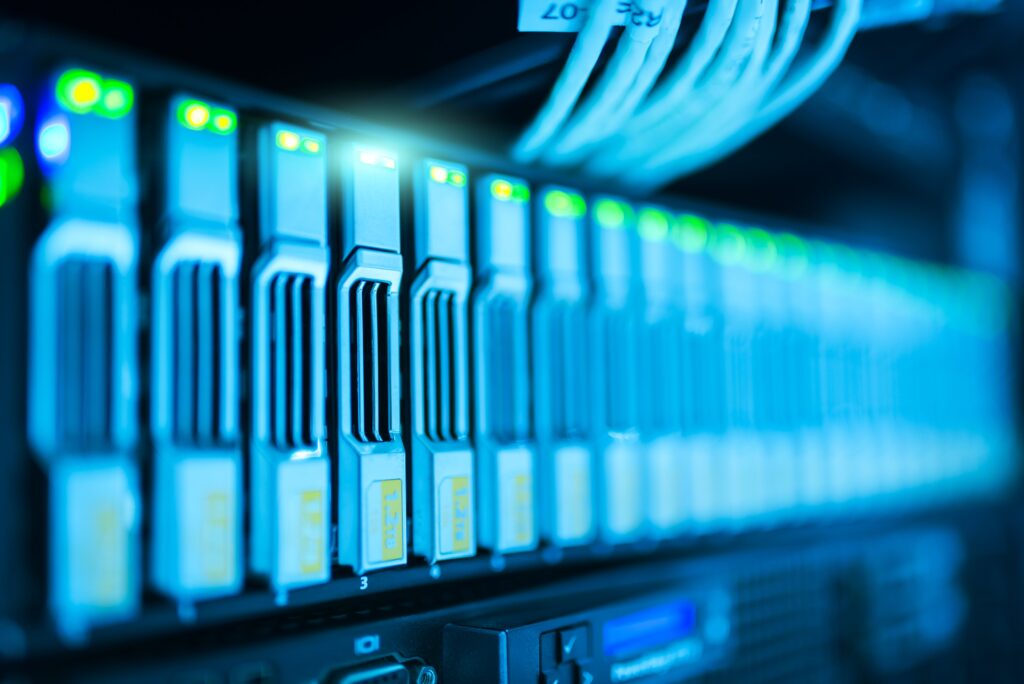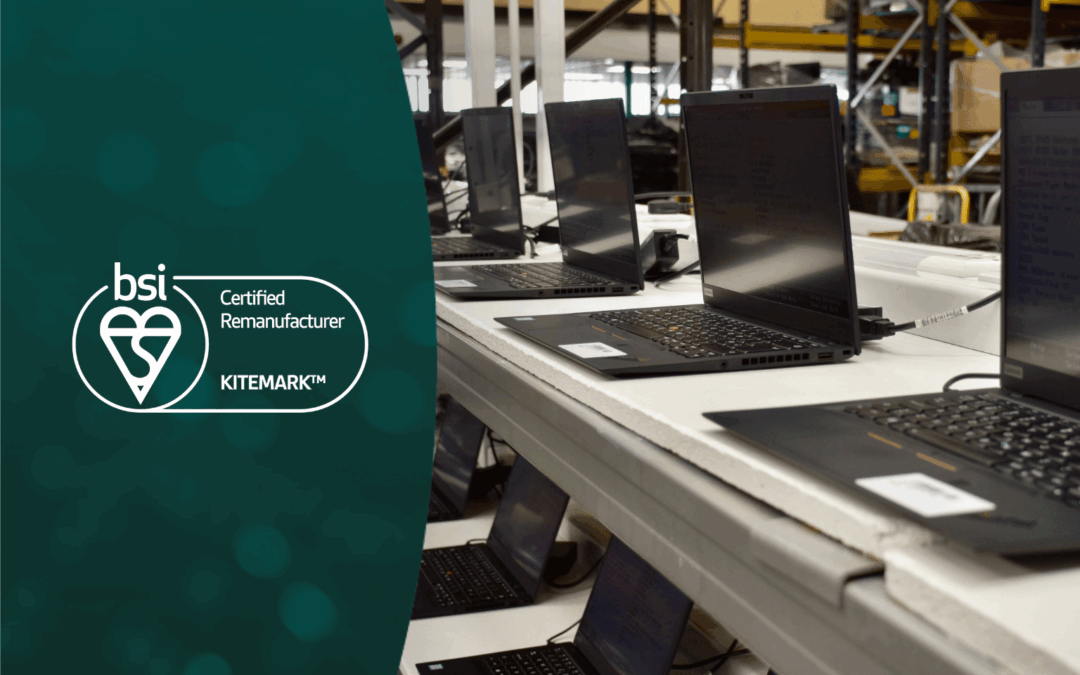With colossal energy consumption and emissions generated, the world’s data centres have faced heavy criticism for some time due to their environmental impact. Many still rely on non-renewable forms of power, waste staggering quantities of water annually within the evaporation cooling towers and generate substantial amounts of e-waste.
Every search, email and download are effectively fuelling the issue. We’ve now become so dependent on digital technologies that they are estimated to account for between 5 – 9% of total global energy consumption. *
3% of this electricity use is devoured by the data centre industry alone – approximately 150 billion kilowatt-hours of electricity, annually. ^ A rapidly expanding Internet of Things, hybrid working and the expansion of cloud computing services have led to Huawei’s prediction that by 2025, the growth of AI will mean that our data centres will be responsible for one-third of the planet’s energy use. + In the UK alone, Microsoft has announced that it will be investing £2.5 billion over the next three years; doubling the size of the data centre’s carbon footprint to boost its AI resource. #
Whilst the digital revolution has been great for business, the sheer quantity of our data has skyrocketed alongside our increasing computing power. The importance of ethical business operations is also shooting up the agenda with CIOs under increasing pressure to deploy sustainable IT practices, including their data storage and processing.
We wouldn’t want to hinder the growth of our economic activity, but how do you drive sustainable business operations when we are reliant on high-emission data centres?
Re-evaluation of the energy-hungry, resource-intensive technologies, which in turn power our organisations is essential as we move into a sustainable future for all. What can be done to minimise the impact of data centres on the environment? Can data centres be green?

What is a green data centre?
Much like any other data centre, green data centres store, manage, process and distribute data but do so with an eco-friendly, circular approach. This extends beyond energy efficiency, and the computing systems used but includes the building’s construction and its geographic location.
What makes a data centre green?
Location.
Locating data centres within cooler climates minimises cooling and energy consumption and maximises cost efficiencies. Research has shown that when servers are relocated to cooler regions, greenhouse gas emissions can be reduced by 8%. ** Advanced technologies mean that it is no longer as important for the data centre to be close to the end user to prevent latency or reliability issues.
For every kilowatt-hour of electricity used by the servers, data centre cooling and humidity control towers require 3.8 litres of fresh water. ^^ Google’s 2023 Environmental statement reports a 20% increase in their water consumption in 2022 with usage totalling an incredible 5.6 billion gallons. ++ Google cited the increase in AI as the main reason. Power-hungry demand a far greater water footprint – a significant environmental criticism of machine learning. According to Gartner, half a litre of water is required for every 20 to 50 Chat-GPT search queries and answers.
As this water evaporates, it cannot be recycled, cold climates allow free filtered air cooling, pulling the outside air in to cool the facility as a more sustainable alternative. Air cooling or direct-to-chip liquid immersion cooling can help to reduce water consumption. Where water is used, responsible water management strategies can utilise filtered grey-water sources, such as rainwater harvested systems.
Power usage effectiveness (PUE).
By far, the most effective way to reduce the environmental impact of data centres is by optimising energy consumption to drive efficiency without hindering operations.
Power Usage Effectiveness, (PUE) was developed as a standardised power consumption measurement for data centres – This is the ratio of the power provided to the facility, divided by the energy the equipment housed in the data centre uses. The aim for PUE is 1.2 or lower, ## and for the figure to be as close to one as possible.
In 2022, Gartner studied data centre power use by equipment PUE type – 40% of the power was used by the servers themselves, 39% for cooling/power, 18% for storage, and 3% for the network; giving an overall PUE of 1.57.

Renewable energy sources.
Energy is one of the highest data centre expenses. Of course, using renewable energy sources, such as solar, wind or hydroelectricity is environmentally friendly. But reducing fossil-fuelled power and adopting green energy is highly cost-effective with the price of natural gas rising by 700% between 2020 – 2022. ***
Renewable energy is 9x cheaper than coal, oil and gas-generated power.
The Carbon Brief.
Many tech giants, including Apple, Amazon, and Google, have been investing in renewable energy at their facilities since 2018; with Microsoft recently reporting that their ‘Sun Streams 2 Solar’ power project will save a million litres of water per day.
Energy-efficient infrastructure.
As centres are frequently over-cooled, the advancing AI technology can also optimise energy efficiency. Climatic monitoring with efficient AI-controlled sensors can ensure centres are cooled to the minimum requirements. Hot and cold server aisles can be separated based on temperature, which also prevents unnecessary cooling. AI can also automate controls for lighting, heating and other systems using power.
State-of-the-art technology will have far greater energy-efficiency ratings. Legacy equipment and older server racks will be more power-intensive but are often larger, requiring more space, and greater cooling of the facility.
Older data centres still operate using mechanical and electrical components, such as uninterruptible power systems (UPSs) and static transfer switches (STSs); these will soon become end-of-life IT assets and need replacement with modern, low-power servers.
Server utilisation.
According to Gartner, often less the 50% of the servers within a data centre are actually used. This percentage can also be as low as 20% – yet power is still consumed by these so-called, ‘zombie servers’ 24/7.
Unplugging or removing these comatose servers, machines that consume power yet do not perform any computing tasks, will save energy and emissions, but they also add unnecessary complexity to centre operations; adding to the workload of the IT teams that manage, monitor and maintain them. Moreover, they may pose a cybersecurity risk if they have outdated firmware or have unpatched vulnerabilities providing an easy entry-point for cybercriminals.

Server Consolidation & decommissioning.
Consolidating multiple under-utilised servers into a single, more efficient machine will drive both environmental and cost efficiency.
Although CIOs should avoid prematurely replacing their IT infrastructure wasting the device’s lifetime value and creating unnecessary e-waste, data centre decommissioning at an appropriate time can save significant sums. Gartner reports that decommissioning a single server can save $500 in energy, $500 in OS licences, and $1,500 in hardware maintenance costs, annually.
Reuse & Recycle.
Recent technological advances have extended infrastructure lifecycles from 3-5 years and 5-7 years, reducing refresh cycle expenditure, and boosting lifetime value for greater sustainability. ***
As 80% of a device’s lifetime CO2e emissions are generated from its manufacture and transportation, the reuse or recycling of redundant IT equipment is essential when it comes to building green data centres. ^^^
Google has been reusing its data centre equipment since 2007, upgrading outdated servers. In doing so they have avoided the procurement of over 300,000 new machines. ^ When the assets cannot be reused internally, Google chooses to sell redundant IT assets for reuse or recycling – Generators, switchgear, automatic transfer switches, raised flooring, copper and power distribution units all have substantial lifetime value and can fuel the circular economy.
Sustainable construction.
When it comes to building a green data centre, the environmentally conscious design and construction of the architecture itself is crucial. International certifications, such as Leadership in Energy and Environmental Design (LEED) or the UK’s standard Building Research Establishment Environmental Assessment Methodology (BREEAM) score a building’s environmental impact. Founded in 1990, BREEAM also measures environmental performance across water and energy usage, transportation, waste management, overall health/wellbeing, and ecology.

For us to protect our environment whilst driving economic development, it is absolutely vital that data centres and businesses alike, strike a balance between operational efficiency and environmental responsibility.
Whilst the initial cost of implementation and some technical limitations may need to be overcome before data centres can become truly green, transitioning towards ethical operational practices now will undoubtedly deliver substantial benefits, both financially and environmentally.
Committing to a data centre carbon emissions reduction strategy will do far more than protect the environment. Decreasing energy/water consumption, maximising the lifetime value of existing technology and responsible IT asset disposal through professional data centre decommissioning, refurbishment and recycling, will deliver substantial operational cost-savings. The implementation of sustainable IT operations is one of the most cost-effective ways to run a data centre.
There are growing calls for government incentives and regulations, which would be instrumental in driving a new era of green data centre development. In the meantime, industry collaboration will certainly magnify the impact of the initiatives required for a greener, more sustainable future.
*European Commission, ^Sunbird, +Scientific Computing, #Computer Weekly, **TotalIT, ^^Times of India, ++ABP Live, ##BMC, ***Gartner, ^^^Capgemini.
tier1 is proud to deliver circular, environmentally friendly ITAD services; helping our clients protect company data, maximise their budget and device lifetime value, whilst boosting their sustainable IT operations.
Supplying a full ITAD chain of custody, we provide on-site data erasure services and data centre decommissioning, along with lifecycle management and upgrade solutions. Our expert team can advise on the best asset recovery strategy, whether this is refurbishment and resale, or recycling your server hardware.
To find out more about any of our secure IT asset disposal services or our 5-star resale platform, speak to our friendly team on 0161 777 1000 (Manchester), 01621 484380 (Maldon) or visit www.tier1.com
Resources.
Gartner, Green Match, TechTarget, The Guardian, The Carbon Brief, Computer Weekly, BMC, Sunbird, Hyperview, Digital Reality, VTS, Total IT, Digital Strategy, Scientific Computing, Times of India, ABP Live, Capgemini.



